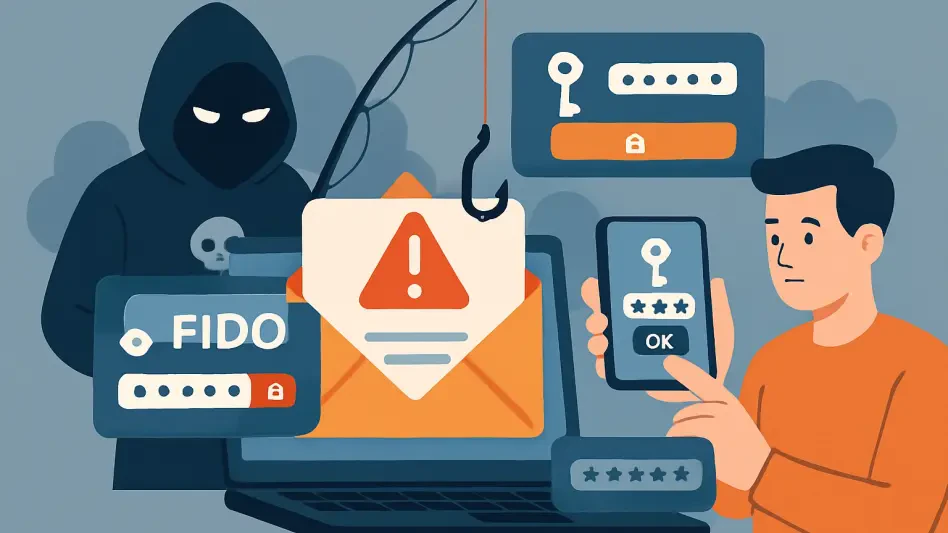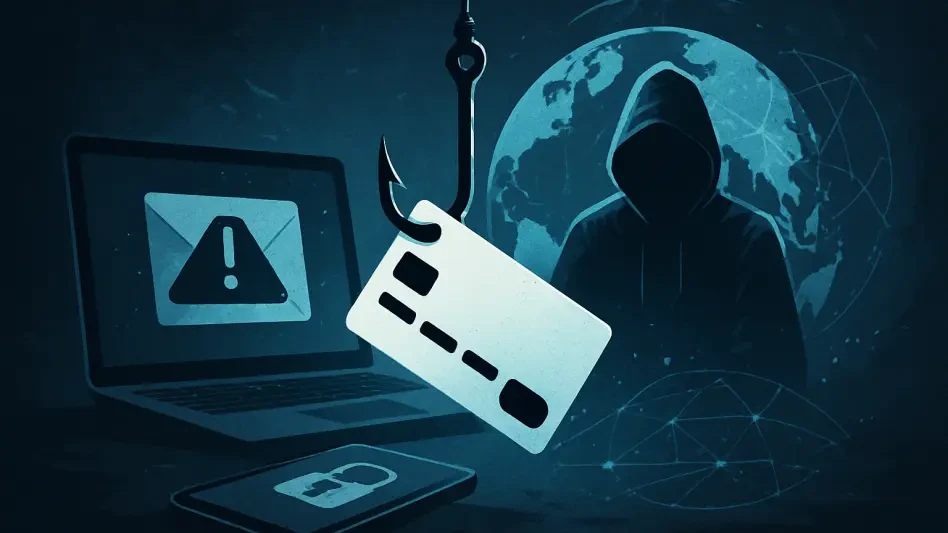In an era where online security is paramount, the emergence of sophisticated cyber threats continues to challenge even the most robust defenses, with FIDO (Fast Identity Online) authentication—a system hailed as a game-changer against phishing—now facing a formidable adversary in downgrade attacks. These attacks exploit subtle vulnerabilities not in the technology itself, but in how it’s implemented and how users interact with it, raising alarms across the cybersecurity community. As phishing tactics evolve with alarming speed, facilitated by accessible and user-friendly toolkits, the potential for attackers to bypass FIDO’s protections by tricking users into less secure methods is becoming a pressing concern. This vulnerability underscores a critical paradox: while FIDO offers unparalleled security through cryptographic keys, its effectiveness hinges on human behavior and administrative decisions. Exploring this threat reveals not only the ingenuity of cybercriminals but also the urgent need for tighter controls and heightened awareness to safeguard digital identities against increasingly cunning strategies.
Unveiling the Mechanism of Downgrade Threats
Understanding the inner workings of FIDO-downgrade attacks is essential to grasping their danger to online security. FIDO authentication operates on a public-private key pair system, where the public key is stored on a server or device, and the private key remains with the user, often protected by biometrics or a hardware token. This design thwarts traditional phishing attempts, as attackers cannot replicate the private key needed to authenticate. However, security researchers have demonstrated a proof-of-concept exploit targeting systems like Microsoft Entra ID, a cloud-based identity solution. In this attack, a malicious plug-in integrated into phishing toolkits deceives users by displaying a message that their FIDO method is invalid. This prompts them to switch to a less secure backup option, such as a password or one-time passcode. Once the user complies, attackers intercept these credentials, gaining unauthorized access. This tactic highlights a shift from purely technical exploits to manipulating user trust, exploiting the weakest link in the security chain.
The implications of such downgrade attacks are far-reaching, especially given the reliance on backup authentication methods for user convenience. Many system administrators configure fallback options to assist with account recovery, a practice rooted in practicality but fraught with risk. These alternatives, often less secure than FIDO, create an exploitable loophole that cybercriminals are quick to target. Cybersecurity experts emphasize that the strength of FIDO lies in its near-impenetrable design, yet its Achilles’ heel is the human tendency to opt for ease over security when faced with an error message. Attackers capitalize on this by crafting convincing prompts that mimic legitimate systems, making it difficult for even savvy users to discern the deception. The ease with which such attacks can be executed using widely available phishing-as-a-service (PhaaS) platforms amplifies the threat, as even novice cybercriminals can deploy sophisticated exploits with minimal technical know-how, putting countless accounts at risk of compromise.
The Rising Tide of Phishing-as-a-Service Platforms
Phishing-as-a-Service (PhaaS) platforms have transformed the cybercrime landscape, democratizing access to advanced attack tools and posing a significant challenge to defenses like FIDO. These platforms, often available for a modest fee or subscription, provide user-friendly interfaces complete with automation and one-click setup features, enabling attackers with limited skills to launch convincing phishing campaigns. Recent data indicates that PhaaS toolkits account for a substantial portion of phishing incidents, with estimates suggesting they drive 60% to 70% of such attacks in recent analyses. Kits like Tycoon 2FA, which dominates the market, alongside others such as EvilProxy and emerging tools like Sniper Dz, showcase the rapid innovation in this space. The integration of FIDO-downgrade capabilities into these kits is seen as an imminent development, given the simplicity of the exploit and the competitive nature of the PhaaS market, where developers continuously add features to outpace rivals.
Beyond their accessibility, the adaptability of PhaaS platforms compounds the threat to online security systems. These tools are not static; they evolve through constant updates and new releases, often tailored to target specific regions or industries, as seen with kits like CoGUI, which focuses on Japanese organizations. The dynamic nature of this ecosystem means that once a vulnerability like the FIDO-downgrade attack is proven viable, it can quickly proliferate across multiple platforms, reaching a wide array of attackers. Industry reports highlight the alarming speed at which new kits emerge, each equipped with enhanced capabilities to deceive users and bypass security measures. This relentless innovation underscores a critical challenge: as defenses strengthen, so too do the tools designed to undermine them. Protecting against these evolving threats requires not only technical solutions but also a proactive approach to educating users about the risks of fallback authentication methods and the importance of adhering to secure practices.
Strengthening Defenses Against Evolving Risks
Mitigating the risks posed by FIDO-downgrade attacks demands a multifaceted approach that addresses both technical and human factors in authentication systems. One key recommendation from cybersecurity professionals is for administrators to eliminate less secure backup methods entirely, enforcing FIDO-only authentication wherever possible. Implementing conditional access policies can further bolster security by restricting logins to managed devices or specific applications, minimizing the chances of users being coerced into weaker methods. Such measures, while potentially inconvenient, are vital in closing the loopholes that attackers exploit. Additionally, organizations must prioritize regular audits of their authentication frameworks to identify and address implementation flaws that could be targeted, ensuring that the integrity of FIDO’s design is not undermined by oversight or outdated configurations.
Equally important is the role of user education in fortifying defenses against these sophisticated phishing tactics. Raising awareness about the dangers of error messages that prompt a switch to alternative login methods can empower individuals to recognize potential deception. Training programs should emphasize the importance of verifying the legitimacy of authentication prompts and reporting suspicious activity promptly. Beyond individual vigilance, collaboration across industries to share intelligence on emerging PhaaS tools and downgrade techniques can help stay ahead of cybercriminal innovation. As phishing kits continue to integrate advanced exploits, the collective effort to develop and disseminate best practices becomes crucial. By combining stringent technical controls with informed user behavior, the cybersecurity community can better shield online environments from the insidious threat of downgrade attacks, preserving the trust and safety that robust systems like FIDO are designed to provide.
Reflecting on Past Challenges and Future Safeguards
Looking back, the cybersecurity landscape grappled with an escalating wave of phishing threats that tested the limits of even the strongest defenses like FIDO. Downgrade attacks emerged as a stark reminder that no system was immune when human behavior and implementation gaps were exploited. The ingenuity of cybercriminals, armed with accessible PhaaS platforms, revealed how quickly a proof-of-concept could foreshadow widespread risk. Moving forward, the focus must shift to actionable strategies—tightening authentication policies, phasing out vulnerable backup options, and fostering a culture of skepticism toward unexpected login prompts. Future safeguards should also include continuous monitoring of PhaaS markets to anticipate new exploits before they scale. By learning from these past challenges, the path to stronger online security lies in blending advanced technology with proactive education, ensuring that both systems and users are equipped to counter the next wave of cyber threats with resilience and foresight.








